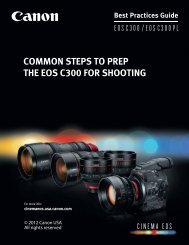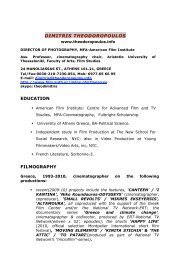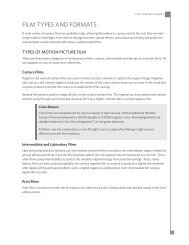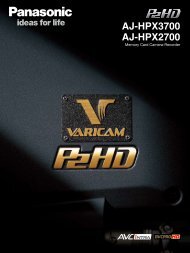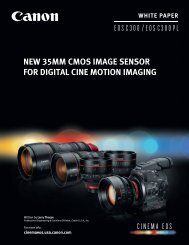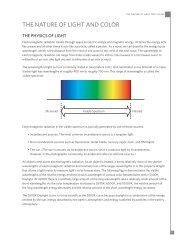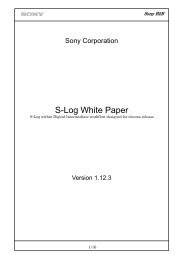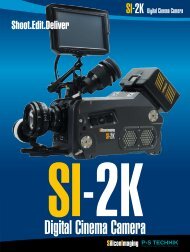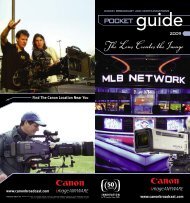An IntroductIon to A FormAt - ARRI CSC
An IntroductIon to A FormAt - ARRI CSC
An IntroductIon to A FormAt - ARRI CSC
You also want an ePaper? Increase the reach of your titles
YUMPU automatically turns print PDFs into web optimized ePapers that Google loves.
T H E S U P E R 1 6 R E N A I S S A N C EIn recent years the <strong>to</strong>ols for shooting Super 16 film have maderevolutionary advances. New Super 16 cameras, lenses, films<strong>to</strong>cks, telecines, scanners and the emergence of the DigitalIntermediate process have elevated the Super 16 format <strong>to</strong>unprecedented levels of image quality and production efficiency.This new Super 16 is the ideal recording mediumfor high definition television content, independent features,commercials and documentaries alike. It combines the advantagesof film with the creative flexibility of film equipmentand economic production costs.Shooting on film has many inherent advantages, includingthe organic film look, its unsurpassed exposure latitude,natural color reproduction, long term archivability and thefact that film is the only globally accepted standard format.Creatively, Super 16 film equipment offers the greatestflexibility and superb image quality. Super 16 cameras areextremely portable and robust, while at the same time easy<strong>to</strong> operate. Their optical viewfinder allows by far the mostcomfortable, accurate and efficient way <strong>to</strong> work when capturingimages. Film cameras are fast, reliable and provide atrouble-free shooting environment on the set. They are capableof variable speeds, ramping and variable shutter angles,plus they accept a vast selection of prime, zoom and specialtylenses.R E G U L A R 1 6In its long his<strong>to</strong>ry, every conceivable subject or genre hasbeen captured on 16 mm film. Developed by Kodak in 1923as a format for hobby cinema<strong>to</strong>graphers, 16 mm soon dominatedthe market with a huge number of diverse cameras.After the Second World War, the 16 mm format became oneof the most successful professional formats ever. The 16 mmcameras were the backbone of the quickly growing televisionindustry as they became the standard <strong>to</strong>ol for capturingsport, news and documentaries. The portability and reliabilityof 16 mm assured a steady stream of content that allowedtelevision <strong>to</strong> ascend <strong>to</strong> its current popularity.S U P E R 1 6In the early 70s, 16 mm evolved further with the introductionof Super 16, invented by Rune Ericson. By utilizing thearea previously occupied by a second row of perforations oncamera negative and reserved for the soundtrack on releaseprints, Super 16 uses the maximum image area available on16 mm film. A Super 16 frame is 20 <strong>to</strong> 40% larger than aregular 16 mm frame depending on the aspect ratio chosen.The native aspect ratio of a Super 16 frame is 1.66:1, which isa good fit for the HDTV aspect ratio of 1.78:1 (19 x 9) or thetheatrical release format of 1.85:1.Regular 16 FrameSuper 16 Frame




